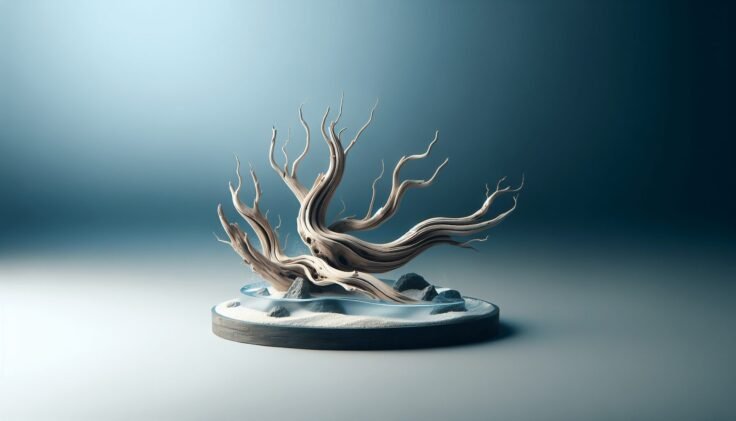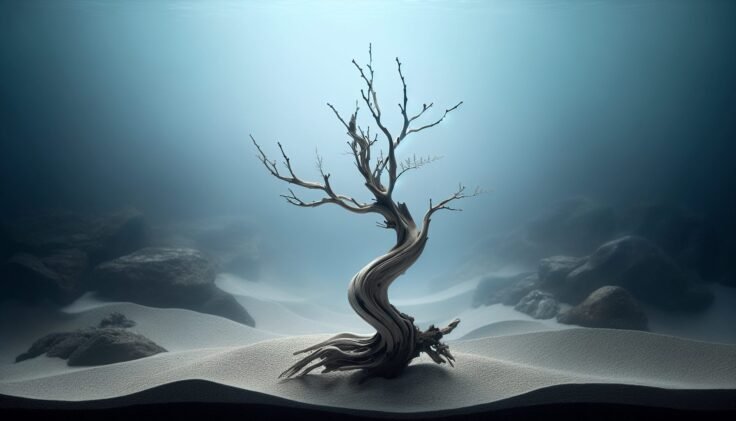Have you ever thought about the art and science behind creating a stunning underwater landscape in an aquarium? Imagine a scene under the water that not only mimics nature but also tells a story with minimal elements. If you’re interested in aquascaping and are drawn toward the beauty of natural aesthetics, you may have heard of “Iwagumi,” a Japanese aquascaping style that emphasizes simplicity and minimalism. But what might intrigue you even more is the incorporation of driftwood into this design. Let’s explore the concept of Iwagumi Driftwood and how it can transform your aquarium into a breathtaking underwater scene.
What is Iwagumi Aquascaping?
The Philosophy of Iwagumi
Iwagumi is a celebrated aquascaping style originated in Japan, based on the principles of Zen simplicity, balance, and harmony. The word “Iwagumi” translates to “rock formation,” reflecting its signature use of rocks as the primary focus in the aquascape. Unlike more conventional aquascaping layouts that are heavily planted and densely populated, Iwagumi emphasizes minimalism, using a sparse number of plants and fish to create a serene yet dynamic layout.
Components of Traditional Iwagumi
In traditional Iwagumi setups, the main elements are rocks, substrate, plants, and a limited selection of fish. The rocks are arranged in a way that adheres to the natural laws of physics, aiming to replicate natural rock formations one might find in the wild. The aesthetic appeal lies in its asymmetrical balance; the layout is designed around a primary focal point, usually a singular large rock flanked by smaller ones, often grouped in odd numbers for a natural appearance.
Simplicity and Complexity
While the Iwagumi style seems simple at a glance, creating a successful Iwagumi aquascape requires a delicate balance of composition and meticulous planning. It aims for a blend of simplicity and complexity; though the design is minimal, it must evoke the beauty and complexity of nature. This paradox is the essence of its appeal and challenge.
Introducing Driftwood to Iwagumi
Why Use Driftwood?
Driftwood introduces an organic and rustic element to the aquascape, providing texture and depth that mere rocks may not achieve on their own. Adding driftwood to an Iwagumi setup can enhance its visual interest and provide an added dimension to the layout. It can be used to simulate the appearance of sunken branches, offering a contrast to the hard surfaces of the stones and bringing more life to the aquarium.
How Driftwood Complements Iwagumi Principles
Driftwood complements the Iwagumi’s principles by adding a natural, flowing quality to the otherwise structured rock formations. Its irregular shapes and natural lines mimic nature’s unpredictability, breaking the uniformity and adding visual intrigue. Furthermore, driftwood can create shaded areas and mimic tree roots, which can accentuate the tranquility of an Iwagumi aquascape.
Choosing the Right Driftwood
Incorporating driftwood requires selecting suitable pieces that harmonize with your rock formations. When choosing driftwood, consider the size, shape, and texture. Avoid pieces that may overpower the stones or disrupt the harmony of the design. Aim for driftwood that subtly supports or enhances the primary focal points of your layout.

Designing an Iwagumi Driftwood Layout
Balancing Rocks and Driftwood
The key to a successful Iwagumi Driftwood layout lies in achieving balance between the hard lines of rocks and the organic flow of driftwood. You need to arrange these elements in a way that maintains the Iwagumi aesthetic while taking advantage of the driftwood’s beauty. One effective approach is interweaving the driftwood among the stones to create layers and dimensions.
Plants and Substrate Selection
For Iwagumi Driftwood, plant selection is critical. Opt for low-growing, carpeting plants like Glossostigma or Hemianthus to enhance the natural look and complement the rocks and driftwood. The substrate should support plant growth while blending into the natural aesthetic. Fine gravel or sand is often preferred.
Fish and Invertebrates
While fish aren’t the main focus in Iwagumi layouts, selecting small, schooling species can contribute to the scenery’s sense of calm and motion. Consider species like Neon Tetras or White Cloud Mountain Minnows, which enhance the aquascape without dominating it. Invertebrates like shrimp can also add color and movement.
Maintenance and Care
Water Parameters
Consistency in water parameters is essential for the health of your Iwagumi Driftwood aquascape. Regular monitoring of pH, hardness, and nitrate levels will help maintain stability. Driftwood can sometimes lower the pH, so adjustments might be necessary to align with the needs of your plants and fish.
Pruning and Plant Care
Regular pruning is essential to maintaining the neat minimalism inherent to Iwagumi aesthetics. Overgrown plants can overshadow the main elements of your scape. Remove any unhealthy leaves and control plant growth to preserve the open space characteristic.
Cleaning and Algae Control
Algae can easily spoil the clean look of an Iwagumi setup. Regular cleaning and careful management of light levels can help. Consider introducing algae-eating species or deploying CO2 systems to support plant growth and reduce algae proliferation.

Challenges and Solutions
Balancing Minimalism with Detail
One common challenge is achieving the right balance between minimalist design and detailed complexity. It’s vital to avoid overcrowding while still ensuring the scene doesn’t feel sparse or incomplete. Start with a clear vision of the desired outcome and add elements incrementally.
Preventing Driftwood Issues
Driftwood can sometimes release tannins, turning the water a tea-color. Boiling the driftwood before introducing it to the aquarium or soaking it for an extended period can minimize this effect. Regular water changes can also help maintain clarity.
Maintaining Fish Health
Owing to the minimal fish stocking, Iwagumi Driftwood setups can face unique challenges regarding the health of the fish. Ensure stable water conditions and provide adequate nutrition. Regularly monitor the health of your aquatic inhabitants and adjust stocking levels if necessary.
Inspiration and Ideas
Examples of Iwagumi Driftwood Layouts
Drawing inspiration from existing aquascapes can help you visualize and plan your layout. Search for images and layouts shared by other enthusiasts to understand how different configurations of stones, driftwood, and plants work together. Take note of how others solve the challenges of balance and proportion.
Getting Started with Your Own Design
Begin planning your Iwagumi Driftwood aquascape by sketching out your initial ideas. Use a sandbox or aquarium planning app to experiment with rock and driftwood placements before committing them to your tank. This helps anticipate balance and structural concerns, allowing you to refine your layout until you’re satisfied.
Conclusion
Iwagumi Driftwood is a captivating aquascaping style that marries the structured aesthetics of traditional Iwagumi with the organic textures of driftwood. The result is a truly unique underwater landscape that captures the imagination and tranquil essence of nature. With careful planning, attention to detail, and an understanding of the principles behind this art form, you can create an aquascape that offers a serene escape and a glimpse into the natural world. Remember, this is a living work of art—designed to evolve and grow over time—making it as rewarding as it is beautiful.







